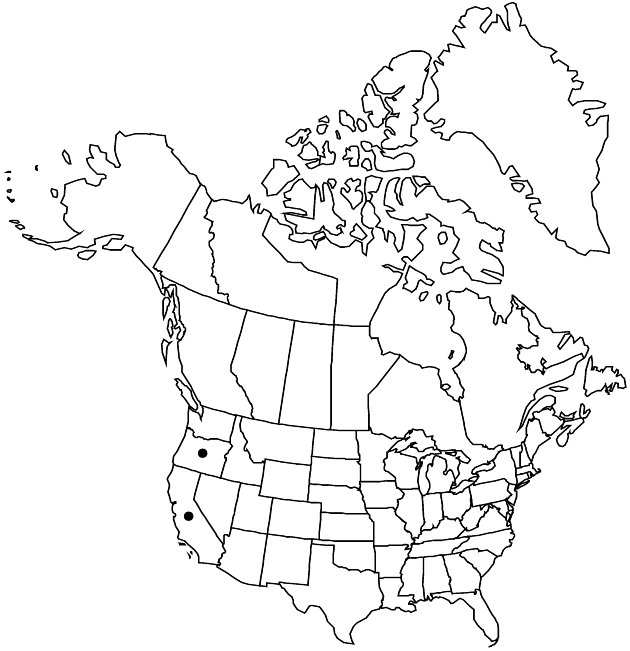Difference between revisions of "Solidago spathulata"
in A. P. de Candolle and A. L. P. P. de Candolle, Prodr. 5: 339. 1836.
FNA>Volume Importer |
FNA>Volume Importer |
(No difference)
| |
Revision as of 18:42, 24 September 2019
Plants (10–)20–40(–50) cm; caudices short-branched, thickened, woody. Stems 1–15+, decumbent to erect, proximally glabrous, sparsely strigose in array. Leaves: basal petiolate to sessile; blades spatulate, 40–120 × 10–30 mm, subcoriaceous, margins crenate, apices acute to obtuse, glabrous; many-leaved rosettes present at flowering; cauline 9–19, sessile; blades similar to basal proximally, becoming oblanceolate distally, reduced to 10 mm, margins entire, apices acute, often heavily resinous. Heads 5–100+, not secund, in paniculiform arrays, or virgate to thyrsiform in robust plants, consisting of axillary and terminal racemiform clusters. Peduncles 3–10 mm (longest), sparsely strigose; bracts clustered near base of heads. Involucres campanulate, 4–7 mm. Phyllaries (15–24 in 3–4 series) unequal, very resinous; outer ovate, obtuse, inner linear-lanceolate, obtuse or acute. Ray florets 4–10; laminae 2–4 × 1–2 mm. Disc florets 10–18; corollas 4.3–6 mm, lobes 0.7–1.5 mm. Cypselae appressed-strigose; pappi 3.5–5.5 mm. 2n = 18.
Phenology: Flowering Jul–Sep.
Habitat: Dunes and headlands
Elevation: 0–100 m
Discussion
Solidago spathulata is scattered along the coast in isolated populations. A narrow interpretation of the species is accepted here following G. S. Ringius (1985).
Selected References
None.
